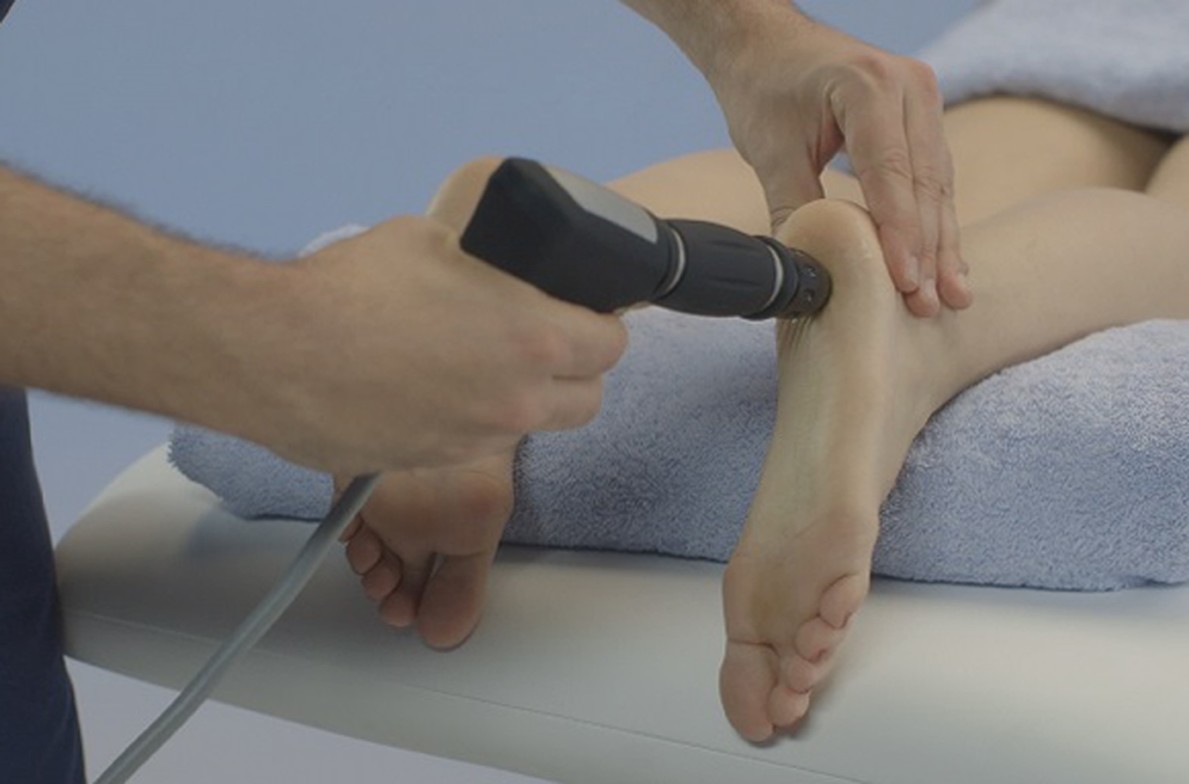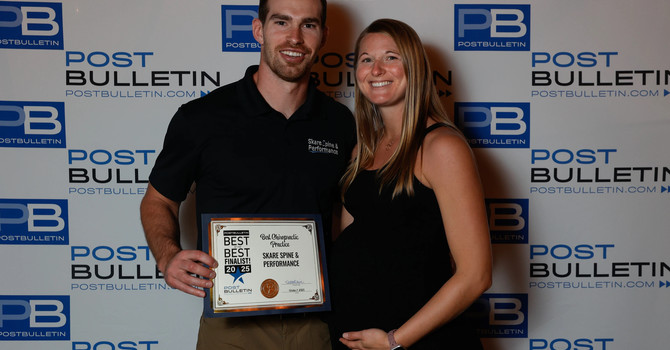
Plantar fasciitis is one of the most common causes of heel pain, especially among runners, active adults, and people who spend a lot of time on their feet. If you’ve ever stepped out of bed in the morning and felt a sharp, stabbing pain in your heel, you know how debilitating it can be. At Skare Spine & Performance in Rochester, MN, we help patients overcome stubborn plantar fasciitis with a modern, non-invasive solution: shockwave therapy.
What Is Plantar Fasciitis?
Plantar fasciitis is inflammation or degeneration of the plantar fascia—a thick band of connective tissue that runs along the bottom of your foot from your heel to your toes. This tissue acts like a shock absorber and supports the arch of your foot. Over time, repetitive stress, overuse, or improper footwear can cause tiny tears in the fascia or a bone spur, leading to pain and stiffness.
Typical symptoms include:
- Sharp heel pain with the first steps in the morning
- Pain after standing or walking for long periods
- Tightness or tenderness along the arch of the foot
- Worsening discomfort after activity
While plantar fasciitis can affect anyone, it’s especially common in runners, athletes, teachers, healthcare workers, and anyone who spends most of their day on their feet.
Traditional Treatments for Plantar Fasciitis
Historically, treatment options have focused on managing symptoms rather than fixing the root cause. Common approaches include:
- Finding stretching and mobility exercises online
- Orthotics or supportive footwear
- Ice and anti-inflammatory medications
- Cortisone injections
- Night splints
While these methods can provide some relief, many patients still experience chronic or recurring pain—especially if the underlying tissue damage hasn’t fully healed. Research even shows us that up to 50% of people will still experience symptoms of plantar fasciitis up to 15 years later. That’s where shockwave therapy comes in.
Introducing Shockwave Therapy
Shockwave therapy, also called extracorporeal shockwave therapy (ESWT), is a non-invasive treatment that uses high-energy sound waves to stimulate healing in damaged tissue. These sound waves penetrate the tissue, increasing blood flow, breaking up adhesions, and triggering the body’s natural repair processes.
In simple terms: shockwave therapy helps kickstart your body’s ability to heal itself—especially in tissues that have become chronically irritated or slow to recover.
At Skare Spine & Performance, we use focused shockwave technology to target the plantar fascia directly, promoting tissue regeneration and reducing pain.
The Benefits of Shockwave Therapy for Plantar Fasciitis
Shockwave therapy has become increasingly popular for treating stubborn foot pain because it offers real results without surgery or long recovery times.
Some of the key benefits include:
- Pain reduction — Most patients experience significant pain relief within just a few sessions.
- Tissue healing — Shockwave therapy stimulates collagen production and increases blood flow to the injured area.
- Faster recovery — It can help patients return to their activities faster compared to traditional care alone.
- Long-term relief — By addressing the root cause of the pain, not just masking symptoms, results tend to be lasting.
- No downtime — You can walk out of the office and go about your day after treatment.
Research has shown shockwave therapy to be effective for chronic plantar fasciitis, even in cases where other conservative treatments haven’t worked.
Does Shockwave Therapy Hurt?
One of the most common questions we get is: “Does shockwave therapy hurt?”
Most patients describe the sensation as mild to moderate discomfort, similar to tapping or pulsing on a sore muscle. The intensity can be adjusted based on your comfort level. Many patients even notice the discomfort decreases as the session goes on—this is a sign the tissue is responding to the treatment.
There’s no anesthesia or medication required, and treatment takes just a few minutes.
What to Expect During a Shockwave Visit
Shockwave treatment itself is quick—about 5 minutes—but your appointment includes extra time for a full evaluation and additional therapies to maximize your results.
Here’s what to expect:
- Assessment – We’ll evaluate your foot, identify the most tender and affected areas, and confirm your diagnosis.
- Treatment – A small applicator is placed on the heel or arch of your foot. Controlled pulses of sound waves are delivered to the plantar fascia.
- Progressive stimulation – We gradually increase the intensity to reach therapeutic levels.
- Post-care plan – You can resume normal activities right away, but we’ll provide complementary exercises or therapies to support healing.
Most patients require a series of 4–6 treatments, spaced about a week apart, for optimal results.
Real Success Stories
Many of our patients come to us after trying everything else—orthotics, online stretches, injections, and months of pain. By addressing painful tissues with shockwave therapy and targeting underlying dysfunctions with targeted strengthening and stretching exercises, we can achieve profound results.
“Nate is amazing!! I had pretty bad plantar fasciitis that was limiting my ability to do the activities I wanted to do, but thanks to Nate it is so much better. He not only provides effective treatment in the office, he also gives me exercises and techniques to continue to improve at home. Highly recommend seeing him!”
- Maija // Rochester, MN
While results vary, the vast majority of patients experience significant improvement—often faster than they expected.
Complementary Care: A Complete Approach to Healing
Shockwave therapy is powerful on its own, but at Skare Spine & Performance, we get the best results when we combine it with other evidence-based treatments. This comprehensive approach helps address not only pain but also the underlying mechanics contributing to plantar fasciitis.
Our complementary services may include:
- Chiropractic care & joint mobilization – Improving ankle and foot mobility to reduce stress on the plantar fascia.
- Soft tissue work – Targeting tight calf muscles, Achilles tendon, and plantar fascia adhesions.
- Rehabilitation & strength training – Toe strength is one of the biggest predictors of plantar fasciitis. We utilize a specific device, called the Toe Pro, to help strengthen the feet and toes to prevent plantar fasciitis from returning.
- Dry needling - Reducing tension and improving circulation.
By combining these treatments, we help patients not only get out of pain but stay out of pain.
Is Shockwave Therapy Right for You?
Shockwave therapy is especially helpful if:
- You’ve had heel or arch pain for 3 weeks or longer
- Traditional treatments like orthotics or stretching haven’t worked
- Pain limits your activity or performance
- You want a non-invasive, drug-free option to promote healing
If you’re ready to get back to running, walking, or living pain-free, shockwave therapy may be the next best step.
Start Healing Today
Plantar fasciitis doesn’t have to control your life. If heel pain has been slowing you down, shockwave therapy offers a proven, effective, and non-surgical solution. At Skare Spine & Performance, we specialize in helping active individuals recover faster and get back to the activities they love.
Call or book online today to schedule your shockwave therapy consultation. We’ll assess your condition, create a personalized care plan, and get you on the path to pain-free movement.

Nate Skare
Contact Me



